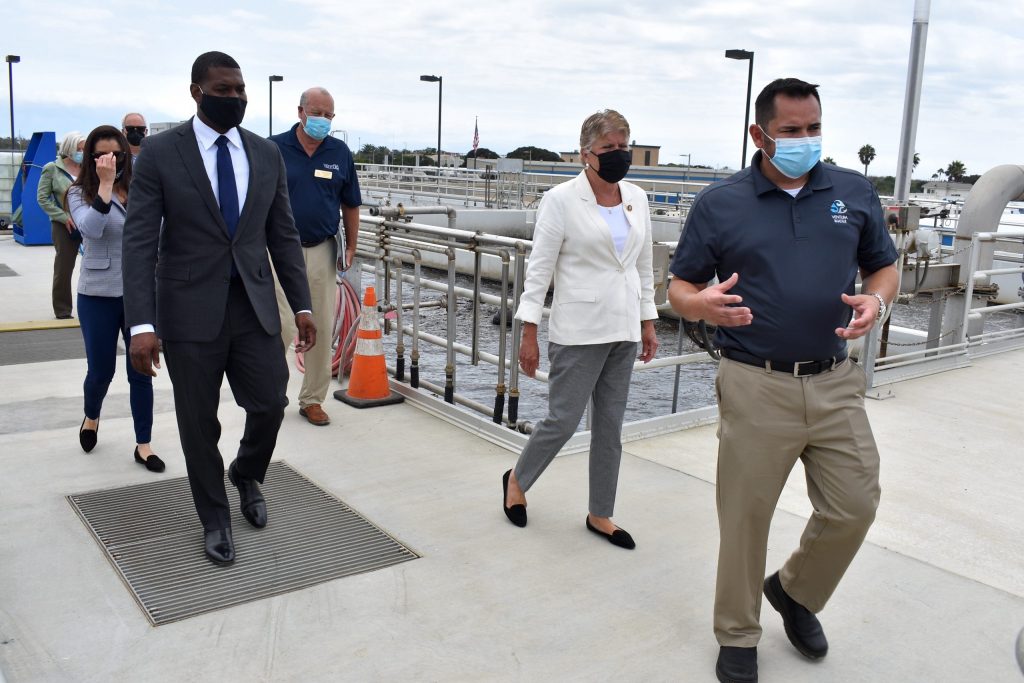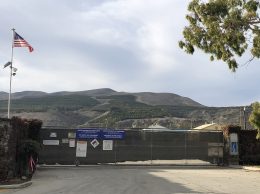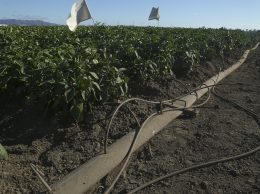EPA chief visits Ventura, talks drought, water infrastructure
IN THIS ARTICLE
- Government Topic
- pacbiztimes Author
By pacbiztimes Thursday, August 19th, 2021

The United States Environmental Protection Agency’s top official visited the city of Ventura‘s wastewater operations on Aug. 18 to get a first-hand look at water systems and discuss the upcoming investments in the nation’s infrastructure.
EPA Administrator Michael Regan and U.S. Rep. Julia Brownley, a Democrat who represents most of Ventura County, were led on a tour of the facility by Wastewater Utility Manager Vince Ines. Attendees also included Ventura Mayor Sofia Rubalcava, City Councilman Joe Schroeder and City Manager Alex McIntyre.
“It’s important to get out from behind the desk in Washington, D.C., and see what’s happening on the ground,” Regan said. “And looking at the innovation and the creativity it takes to develop these aged facilities in a way that can withstand some of the pressures we’re facing today.”
In Ventura County, Regan said, there are some entrepreneurial efforts to keep pace with the change in climate and drought conditions. Ventura’s water recycling efforts aim to improve re-liability and sustainability of clean water supplies.
“We can make the right investment,” Regan said. “You don’t have to compromise environmental protection, economic prosperity and development.”
Ventura’s sewer and wastewater plant, on Spinnaker Drive in the Ventura Harbor, was built in 1955. The site has undergone several upgrades through the decades, Ines said.
“Now, we’re taking a step back and looking at our next future endeavor: How do we want to address the needs of the wastewater facility, with updated and efficient technology, and how to lessen our footprint,” Ines said.
Regan is touring water infrastructure facilities across the country because “all of our water systems are facing different types of pressures,” he told the Business Times.
Areas around Detroit and Chicago in the Midwest have experienced drastic flooding, Regan said. Elsewhere, hurricanes have battered Regan’s home state of North Carolina.
And of course, Ventura County and the rest of California are deep in another drought.
“We’re collecting data all across the country,” Regan said. “We know with the bipartisan infra-structure deal and those resources — it won’t be one size fit all — and it’s important we have an understanding of what we’re dealing with all across the country.”
California’s worsening drought was front-of-mind during Regan’s visit to Ventura. The latest maps from the U.S. Drought Monitor, released Aug. 19, show most of Ventura County in “exceptional drought.” That’s the most severe category in the Drought Monitor, and a step beyond most of the tri-county region, which is in “extreme drought.”
Ventura County is also the “fastest-warming county” in the lower 48 United States, Brownley said, referring to a study by the Washington Post in 2019.
Regan promptly replied, “Wow.”
Regan and Brownley also discussed the historic infrastructure investments called for by the Biden Harris administration. On Aug. 11, the Senate approved a $1 trillion infrastructure bill, which includes funding for water systems and water infrastructure projects. The House of Representatives still needs to vote on the legislation.
It’s not clear yet exactly what projects a final infrastructure bill would fund, but it’s likely that billions will go to water infrastructure.
“We need every tool in our toolbox to conserve water and recycle water,” Brownley said.
Ventura relies solely on local sources to provide water to its 105,000 residents, including water from Lake Casitas and from the Ventura River, and three groundwater basins. The city is working on plans to supplement those sources by connecting to the California State Water Project and by recycling its existing water.
“We have done a good job augmenting and diversifying our water supply portfolio, but we only use local sources,” Ventura Water General Manager Susan Rungren said. “That’s one of the reasons we are looking for imported water and VenturaWaterPure.”
The VenturaWaterPure program is a proposed water reuse system that would use advanced technology to turn used water into a drinkable water supply. .
The city ran a small pilot project for recycled water in 2015. Now it plans to start construction on the full VenturaWaterPure in November 2023, at an estimated price tag of $260 million, Rungren said. The program has received or is seeking funding from several federal sources.
“It’s drought-resistant, which is important for us,” Rungren said of VenturaWaterPure. “It also improves our water quality.”
The VenturaWaterPure project should provide about 20% of Ventura’s water needs, Rungren said.
The State Water Interconnection project calls for a pipeline between the Calleguas Municipal Water District system in Camarillo and Ventura’s systems, which would enable the delivery of allocated California State Water Project water to Ventura. The multi-agency project is in the permitting and design phases, and should cost about $50 million, Rungren said at the Aug. 18 event.

Related Articles
 Friday, October 14th, 2022
Friday, October 14th, 2022










